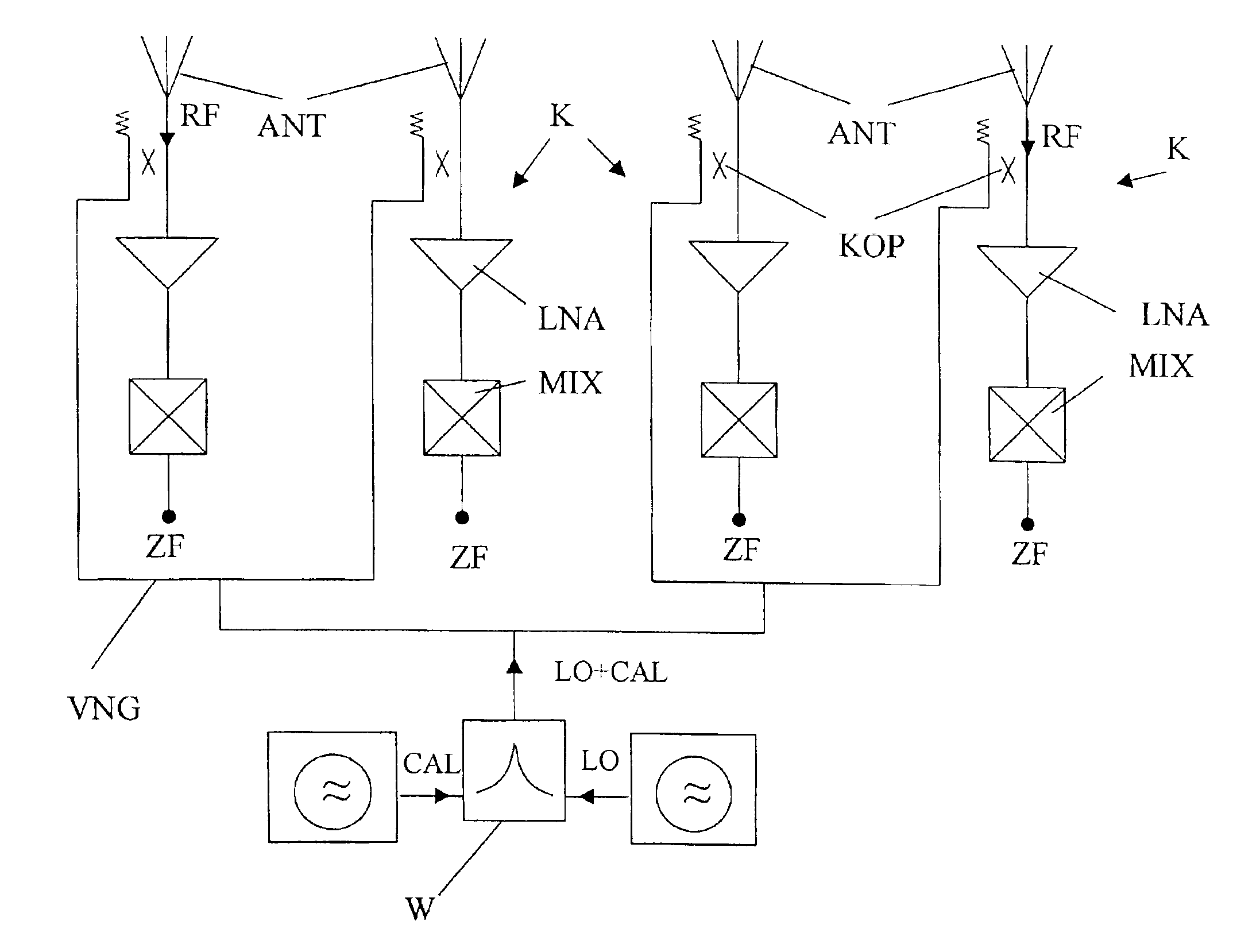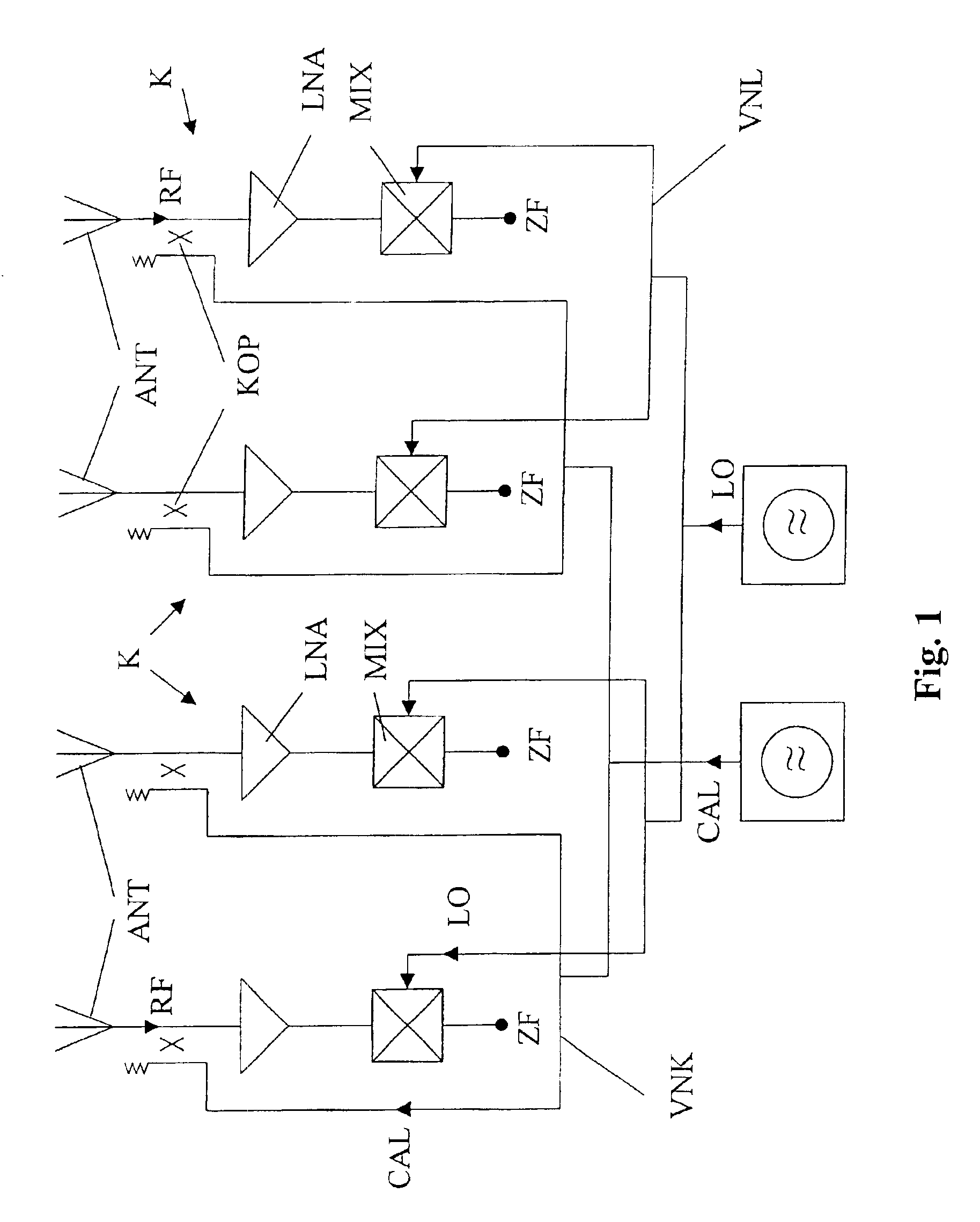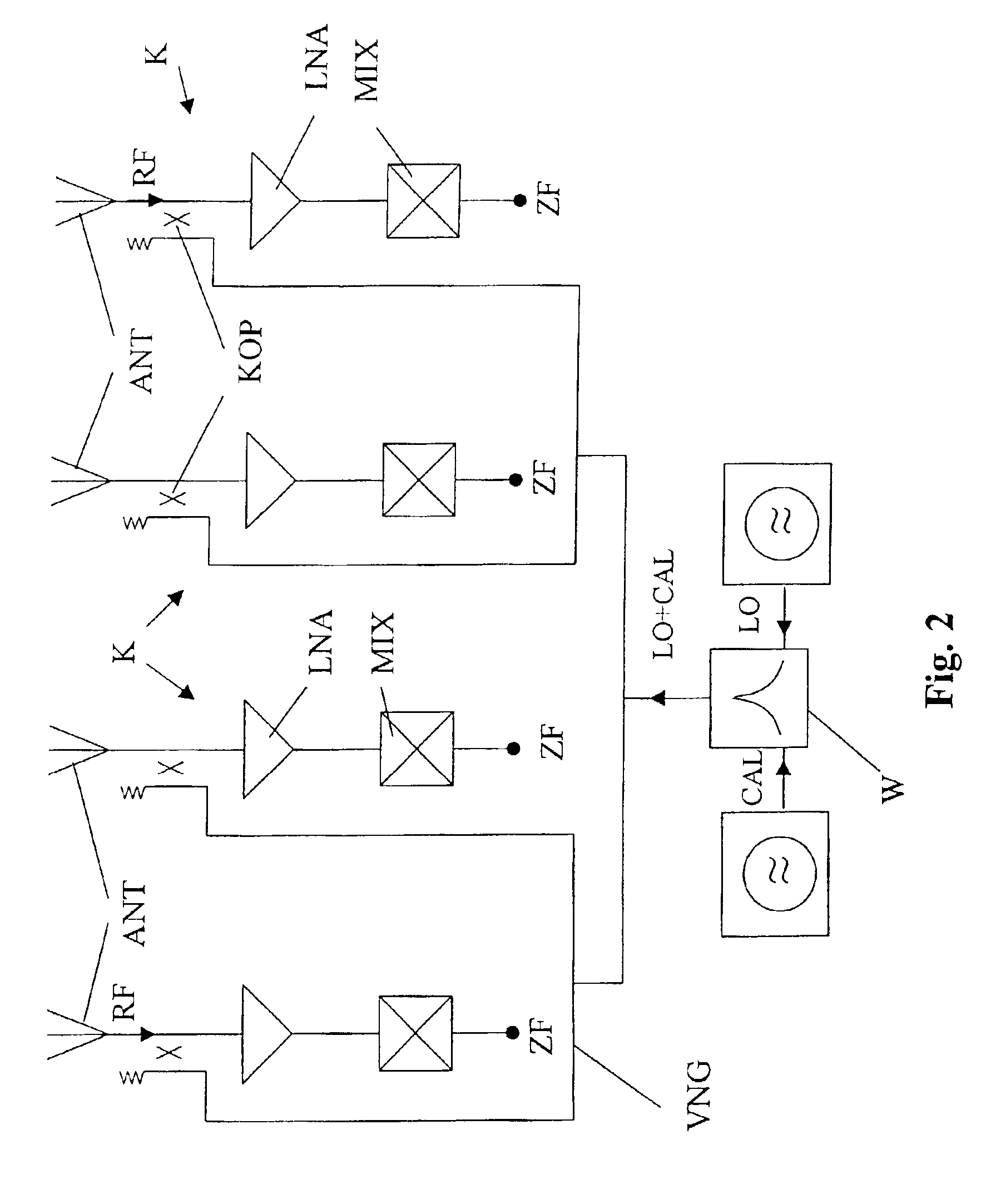Active receiving array antenna
a technology of receiving array and receiving antenna, which is applied in the field of receiving array antenna, can solve the problems of high interconnection complexity, high power requirement of central local oscillator signal generation, and respect to array antenna production cost, and achieve low noise sensitiveness, low noise factor of receiving channel, and low noise factor
- Summary
- Abstract
- Description
- Claims
- Application Information
AI Technical Summary
Benefits of technology
Problems solved by technology
Method used
Image
Examples
Embodiment Construction
[0029]FIG. 2 shows a receiving array antenna with, for example, 4 channels in an interconnection of the invention with a common distribution network for the local oscillator and calibration signal. Each channel K is configured in this order by a series circuit of an antenna element ANT, a coupler KOP, a low-noise amplifier LNA and a mixer MIX. The amplifier can, of course, consist of several amplifier stages.
[0030]The intermediate frequency signal ZF of the corresponding channel is tapped at the output of the mixer MIX. The individual couplers KOP of the channels K are connected to each other via a common distribution network VNG. In this distribution network VNG, a centrally generated calibration signal CAL and a local oscillator signal LO are supplied by means of a T-switch W.
[0031]A first advantageous embodiment for coupling the distribution network for the local oscillator and calibration signal to the circuit is shown in FIG. 3. The distribution network VNG is coupled By means ...
PUM
 Login to View More
Login to View More Abstract
Description
Claims
Application Information
 Login to View More
Login to View More - R&D
- Intellectual Property
- Life Sciences
- Materials
- Tech Scout
- Unparalleled Data Quality
- Higher Quality Content
- 60% Fewer Hallucinations
Browse by: Latest US Patents, China's latest patents, Technical Efficacy Thesaurus, Application Domain, Technology Topic, Popular Technical Reports.
© 2025 PatSnap. All rights reserved.Legal|Privacy policy|Modern Slavery Act Transparency Statement|Sitemap|About US| Contact US: help@patsnap.com



